How a chemical spill on the Tuas Second Link gets contained
Sixteen government agencies and companies from Singapore and Malaysia held a joint chemical spill exercise at Tuas Second Link on Wednesday.
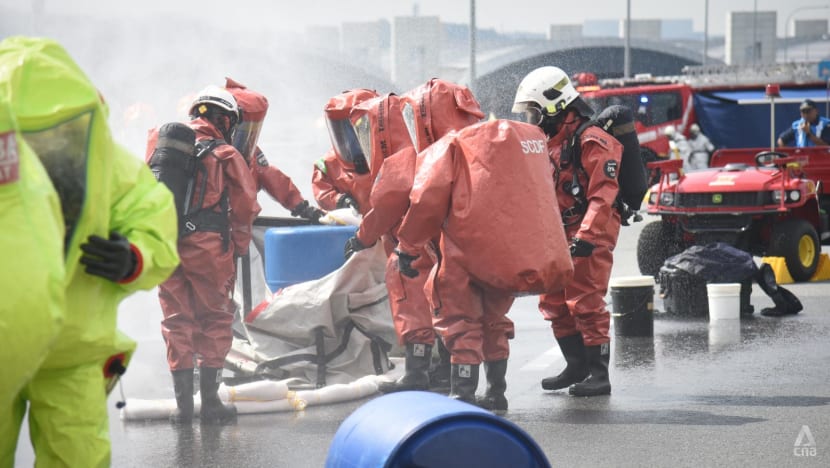
Emergency responders from Singapore and Malaysia participate in a bilateral chemical spill exercise at Tuas Second Link on Jul 26, 2023. (Photo: CNA/Syamil Sapari)
SINGAPORE: Large amounts of hazardous chemicals are transported between Singapore and Malaysia via the Tuas Second Link every day.
Sulphuric acid, hydrochloric acid and sodium hydroxide have industrial uses, but can also cause injury and contaminate the environment if spills occur.
In fact, Singapore and Malaysia have an agreement restricting road transportation of hazardous chemicals to the Tuas Second Link.
This is to avoid the tankers passing through more congested and populated areas in Woodlands and Bukit Timah in Singapore, and Johor Bahru across the border.
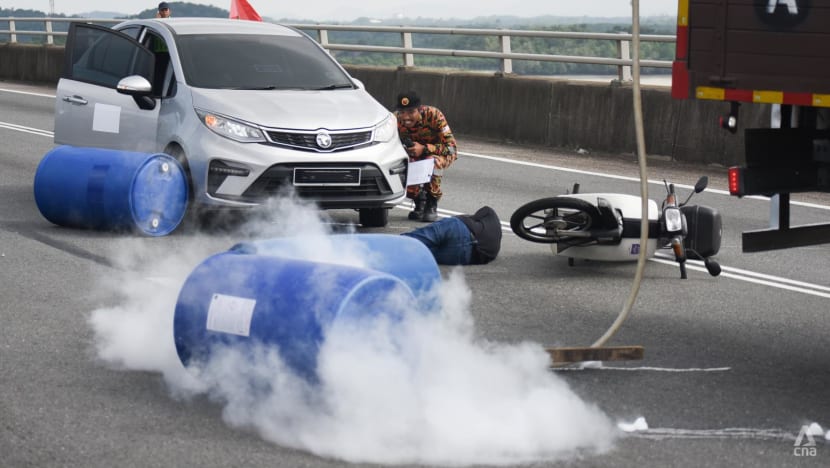

Clean-up of any spill takes coordination and practice. On Wednesday (Jul 26), 16 government agencies and companies from Singapore and Malaysia held a joint chemical spill exercise.
The scenario, which took place across lanes cordoned off from busy traffic, involved an accident among vehicles moving towards Singapore.
A motorcycle and a car collide in front of a lorry carrying 10 drums of hydrochloric acid. To avoid hitting them, the lorry driver swerves, losing control and hitting a barrier wall.
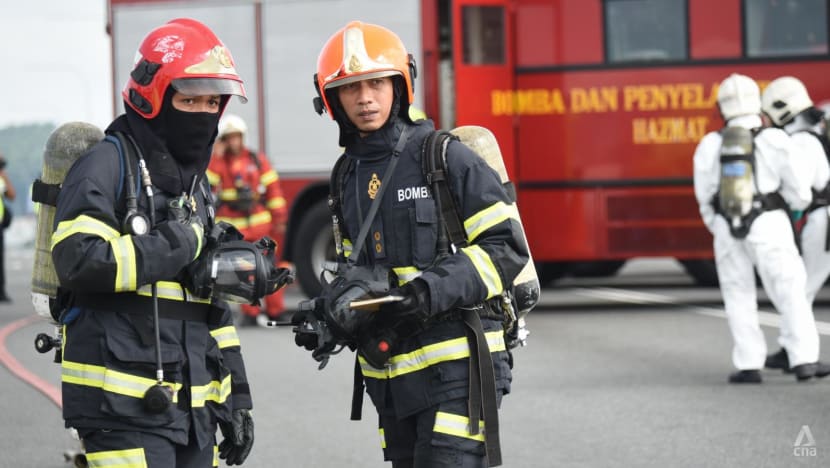
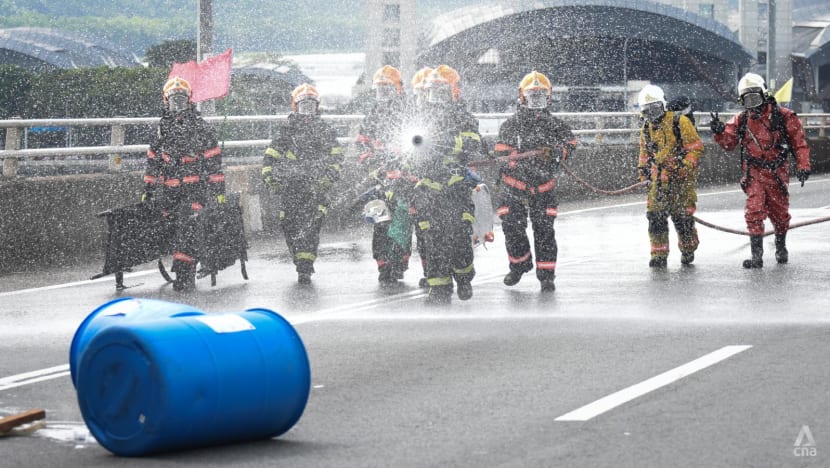
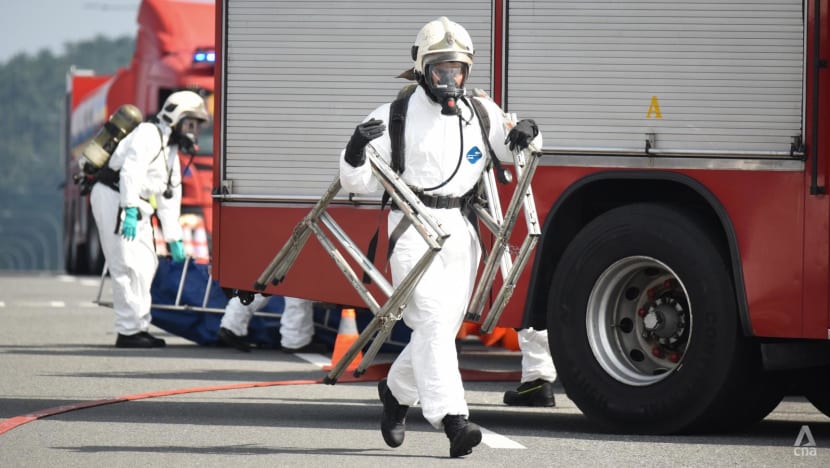
The impact knocks five drums of hydrochloric acid onto the road. Two drums on Singapore’s side rupture, spilling hydrochloric acid. Three drums roll to Malaysia’s side, with two similarly rupturing.
Concentrated hydrochloric acid is corrosive and can cause burns. Inhalation of the vapours can also cause coughing, choking, inflammation of the respiratory system, fluid in the lungs, circulatory failure and even death.
Responders from both countries have to deal with the chemical spill as well as the casualties – all occupants of the three vehicles are injured.
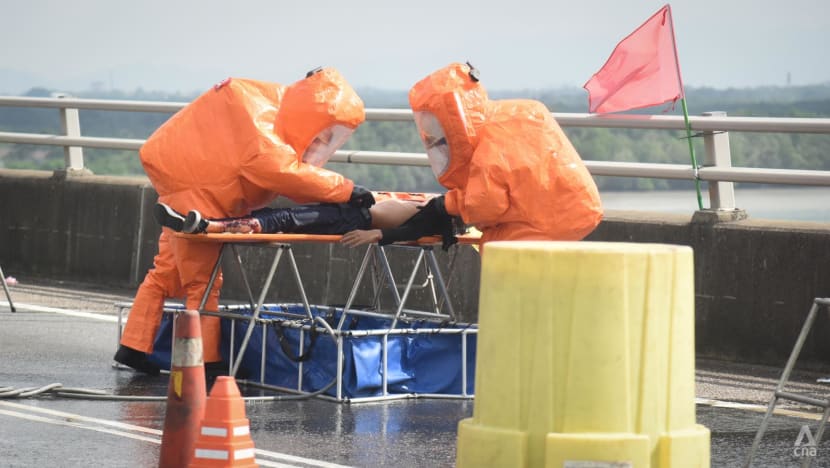
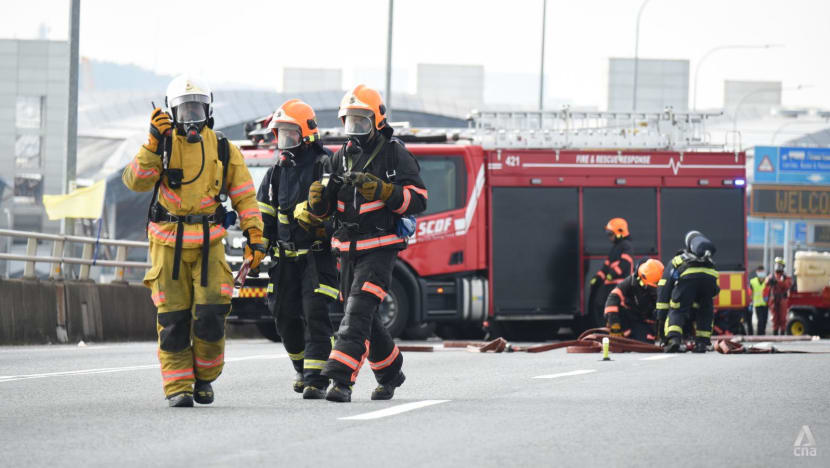
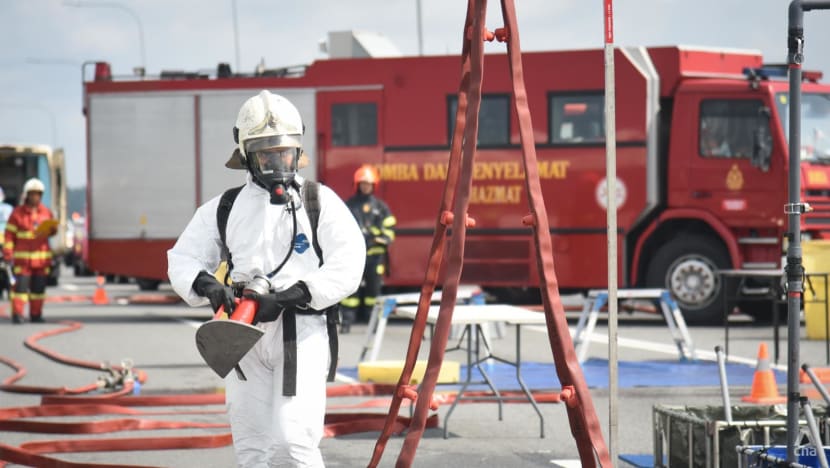
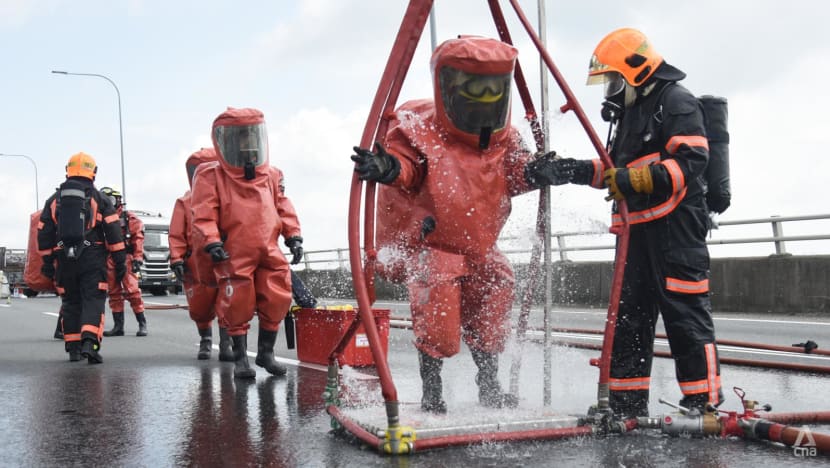
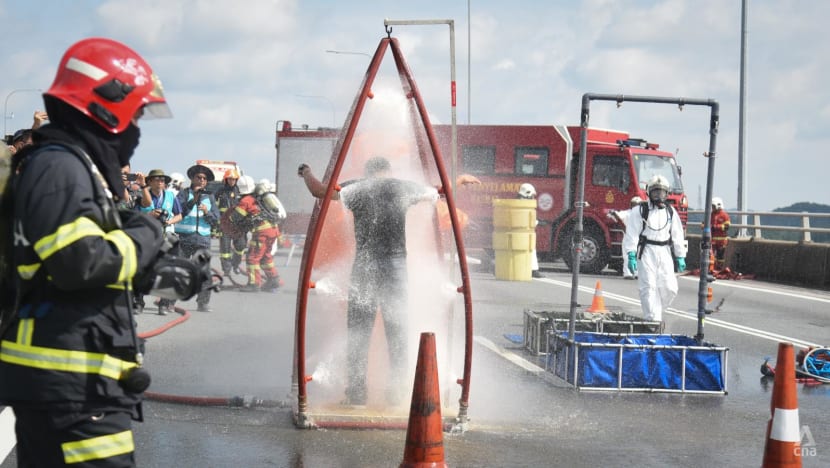
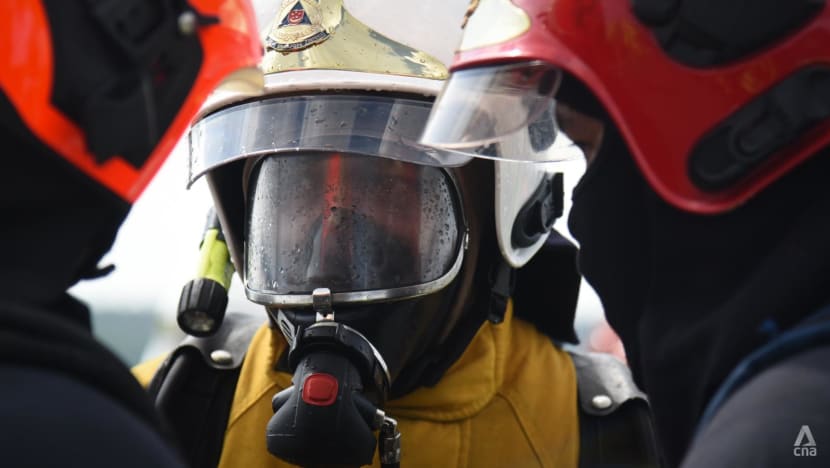
The joint chemical spill exercise is typically held biennially, but was put on pause during the COVID-19 pandemic. Wednesday was the first time the exercise had been held since 2019.
"I am glad that we resumed the bilateral exercise after COVID-19 and I am heartened at how well our agencies from both countries have worked together in its planning and smooth execution," said NEA CEO Wong Kang Jet.
He added that the joint exercise is a commitment by both countries to respond swiftly and effectively to any chemical spill at the Tuas Second Link.
















